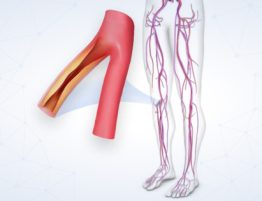
The 10-year heart attack and stroke risk assessment calculator(link opens in new window) published by the American Heart Association and American College of Cardiology accurately predicts risk and does a good job at ranking people most likely to have future cardiovascular events, according to a new analysis(link opens in new window) published in the Journal of the American Medical Association.
The AHA and ACC developed the calculator to help healthcare providers determine the 10-year risk for heart attack and stroke and use it to guide treatment. The calculator was published in November and is meant to help guide doctors in their treatment decisions, including whether to prescribe cholesterol-lowering drugs — known as statins — to patients at highest risk.
Researchers applied the risk assessment calculator to data from nearly 11,000 participants enrolled from 2003-2007 in the REGARDS trial(link opens in new window). At enrollment, people who participated were: ages 45-79; had not had a heart attack, stroke or other coronary heart disease; did not have diabetes, heart failure or atrial fibrillation; and were not taking statins.
Most REGARDS participants who reported having a heart attack or stroke within five years provided researchers their medical records. For those who did not provide records, the JAMA researchers confirmed their heart attacks or strokes with Medicare hospitalization records.
Researchers found that the number of heart attacks and strokes predicted by the risk assessment tool closely matched the actual number that occurred for the five years of available REGARDS follow-up data. They used the five-year data to predict 10-year risk levels.
“It looks like we’re dead on in predicting event rates,” said Donald Lloyd-Jones, MD, ScM, co-author of the study and Senior Associate Dean for Clinical and Translational Research and Chair, Department of Preventive Medicine at the Northwestern Feinberg School of Medicine. “Clinicians can be very confident that the risk calculator is working exactly as we asked it to.”
The REGARDS trial, the Reasons for Geographic and Racial Differences in Stroke was used to assess the AHA/ACC risk assessment calculator because it’s the most contemporary and most broadly representative of the U.S. population, said Lloyd-Jones, also a national AHA volunteer who helped develop the risk assessment calculator.
“Importantly, it’s very well calibrated for the U.S. populations. The risk it predicted was very, very close to the actual number of events that was observed in the REGARDS trial.”
The risk assessment equation used by the calculator was included as one of four sets of AHA/ACC prevention guidelines, which also included cholesterol guidelines (link opens in new window)that recommend the 10-year risk of heart attack and stroke, not a specific cholesterol measurement, should guide treatment.
After publication, concerns arose about the accuracy of the risk calculator, with some saying that it overestimated the risk of heart attacks and stroke, which could lead to people being prescribed statins unnecessarily.
The current analysis should allay the early concerns and help explain why others had problems validating the risk assessment calculator, Lloyd-Jones said.
“The lower event rates found by others occurred because they did not capture all events or exclude people who were taking statins,” he said. “So the problems others had were largely of their own making.”





